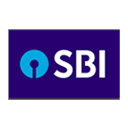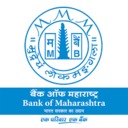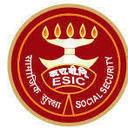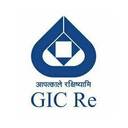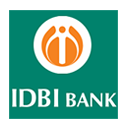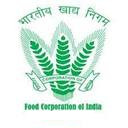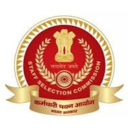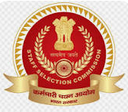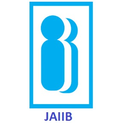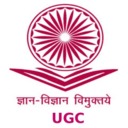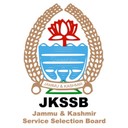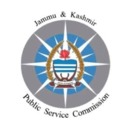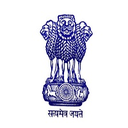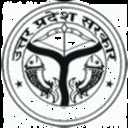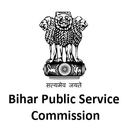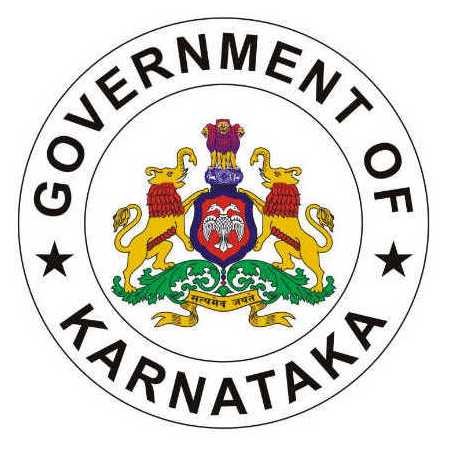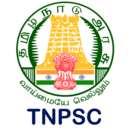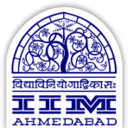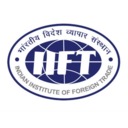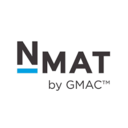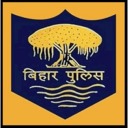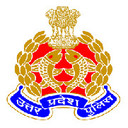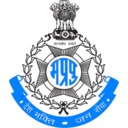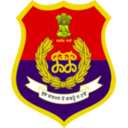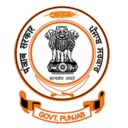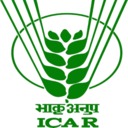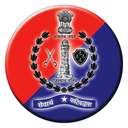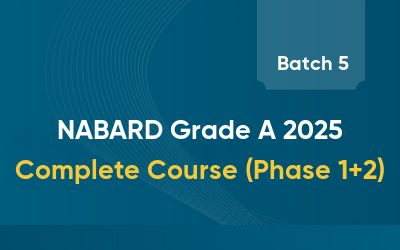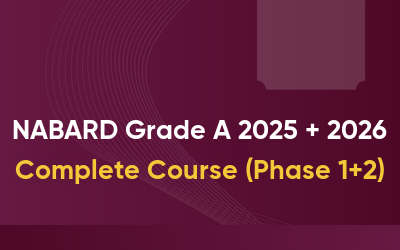NABARD Grade A 2025: The NABARD Grade A detailed Notification PDF was released on 8th November 2025 for a total of 91 vacancies. The announced vacancies are for the posts of Rural Development Banking Services, Legal Services, and Protocol & Security Services. As per the detailed notification, the application process has started, and the last date to fill the application form is 30th November 2025.
In this blog, we provide details of the NABARD Grade A notification dates, application dates, vacancy details, a direct link to download the notification PDF, and more.
NABARD Grade A Notification Out
The NABARD Grade ‘A' 2025 notification has been released on the official website nabard.org for 91 vacancies across various posts. The online application process has started today and will continue until 30th November 2025. Before applying, candidates should carefully read the official notification PDF to understand the eligibility criteria, selection process, and other important details. Candidates can also download the detailed NABARD Grade ‘A' notification using the direct link provided below.
Get to know all the details about NABARD Grade A 2025
NABARD Grade A Exam Dates 2025
The NABARD Grade A Exam Dates 2025 has been released along with the detailed Notification on 8th November 2025. The important dates related to NABARD Grade A 2025 are as follows:
| Events | NABARD Dates 2025 |
|---|
| NABARD Grade A Notification Release Date | 8th November 2025 |
| NABARD Grade A Application Start Date | 8th November 2025 |
| NABARD Grade A Application Last Date | 30th November 2025 |
| Phase 1 Admit Card Release Date | To Be Updated |
NABARD Grade A Phase 1 Exam Date (RDBS/Legal/P&SS) | 20th December 2025 |
| NABARD Result Date for Prelims | To Be Updated |
| NABARD Phase 2 Admit Card Release Date | To Be Updated |
NABARD Grade A Phase 2 Exam Date (RDBA/Legal) | 25 January 2026 |
| NABARD Result Date for Phase 2 | To Be Updated |
| Psychometric Test Date | To Be Updated |
| NABARD Final Result Date | To Be Updated |
Attempt NABARD Grade A Mock Test
NABARD Grade A Vacancy 2025
As per the Notification PDF, the NABARD Grade A notification has been released for a total of 91 vacancies. Every year, there is very high competition for a limited number of vacancies; hence, strong NABARD Grade A preparation is the key to achieving the desired result. Candidates can check the category-wise and stream-wise vacancy details provided in the table below.
| S.No | Post / Discipline | UR | SC | ST | OBC | EWS | Total | PwBD |
|---|
| I. AM (RDBS) |
| i) General | 20 | 7 | 4* | 13 | 4 | 48 | 7@@ | |
| ii) Chartered Accountant | 2 | 1 | - | 1 | - | 4 | - | |
| iii) Company Secretary | 1 | - | - | 1 | - | 2 | - | |
| iv) Finance | 2 | 1 | 1 | 1 | - | 5 | - | |
| v) Computer / Information Technology | 4 | 2 | 1 | 2 | 1 | 10 | - | |
| vi) Agriculture Engineering | 1 | - | - | - | - | 1 | - | |
| vii) Plantation & Horticulture | 1 | - | - | 1 | - | 2 | - | |
| viii) Fisheries | 1 | - | 1 | - | - | 2 | - | |
| ix) Food Processing | - | 1 | - | - | 1 | 2 | - | |
| x) Land Development & Soil Science | 1 | - | - | 1 | - | 2 | - | |
| xi) Civil Engineering | - | 1 | 1 | - | - | 2 | - | |
| xii) Electrical Engineering | 1 | - | - | - | 1 | 2 | - | |
| xiii) Media Specialist | 1 | - | - | - | - | 1 | - | |
| xiv) Economics | - | 1 | - | - | 1 | 2 | - | |
| AM (RDBS) Total | 35 | 14 | 8 | 20 | 8 | 85 | - | |
| II) AM (Legal) | 2 | - | - | - | - | 2 | - | |
| III) AM (Protocol & Security) | 3 | - | 1 | - | - | 4 | - | |
| Grand Total | 40 | 14 | 9 | 20 | 8 | 91 | 7 | |
Note:
- @@ PwBD Reservation:
- Category (a) – 02 (includes 01 backlog vacancy)
- Category (b) – 02 (includes 01 backlog vacancy)
- Category (c) – 02 (includes 01 backlog vacancy)
- Category (d) & (e) – 01
- * Includes 02 ST backlog vacancies
NABARD Grade A 2025 Eligibility Criteria
Before applying, it is important to check the eligibility criteria for NABARD Grade A 2025. The detailed eligibility requirements are mentioned in the official notification. Candidates should carefully review these details to ensure they qualify and to plan their exam preparation accordingly. The NABARD Grade A eligibility is usually divided into three main sections: educational qualifications, age limit, and nationality.
NABARD Grade A Educational Qualification
To apply for NABARD Grade A (RDBS/ Legal Services/ P&SS), candidates must meet the following academic requirements by 1st November 2025:
General Category:
- Minimum 60% marks in Graduation (55% for SC/ST/PwBD), or
- Minimum 55% marks in Post-Graduation (50% for SC/ST/PwBD), or
- Professional qualifications like CA/CS/ICWA or Ph.D. from recognized institutions.
- For CGPA holders, here's the standard conversion:
| CGPA/OGPA/CPI (10-point scale) | Equivalent % |
|---|
| 6.75 | 60% |
| 6.25 | 55% |
| 5.75 | 50% |
| 5.25 | 45% |
Candidates can only apply for one discipline, and if you apply for multiple, only the last application will be considered valid.
NABARD Grade A Educational Qualification for Protocol & Security Service (P&SS)
To apply for the post of Assistant Manager in Grade ‘A' (Protocol & Security Service), candidates must meet the following educational and professional requirements as per the NABARD Grade A 2025 Notification:
| Post | Educational Qualification | Experience Requirement |
|---|
| Assistant Manager (Protocol & Security Service) | The candidate must be an Officer with a minimum of 10 years of Commissioned Service in the Army, Navy, or Air Force, holding a valid Ex-Serviceman Identity Card. | - Minimum 10 years of Commissioned Service in the Defence Forces (Army/Navy/Air Force).
- For PWBD candidates, a minimum of 5 years of Commissioned Service is required.
- Short Service Commissioned Officers who have completed 10 years of service and are due for release by 31 October 2026 may also apply, provided they are released honorably. |
| Note: | There is no specific academic qualification prescribed apart from the required commissioned service experience. |
NABARD Grade A Age Limit 2025
Candidates applying for NABARD Grade A Recruitment 2025 must fulfill the prescribed age criteria as on 1st November 2025.
| Post | Minimum Age | Maximum Age | Candidates Born Between |
|---|
| Assistant Manager (RDBS / Legal) | 21 years | 30 years | 02 November 1995 to 01 November 2004 |
| Assistant Manager (Protocol & Security Service) | 25 years | 40 years | 02 November 1985 to 01 November 2000 |
Note: The dates are as per the official notification released on 8th November 2025.
NABARD Grade A Age Relaxation 2025
Candidates belonging to certain categories are eligible for relaxation in the upper age limit as per government norms. However, no age relaxation applies to the Protocol & Security Service (P&SS) post.
| Category | Age Relaxation | Maximum Age Limit (RDBS / Legal) |
|---|
| General / UR | — | 30 years |
| OBC | 3 years | 33 years |
| SC / ST | 5 years | 35 years |
| Ex-Servicemen | 5 years | 35 years |
| ECOs / SSCOs | 5 years | 35 years |
| Children / Family Members of 1984 Riot Victims | 5 years | 35 years |
| PWBD (General) | 10 years | 40 years |
| PWBD (OBC) | 13 years | 43 years |
| PWBD (SC / ST) | 15 years | 45 years |
| Protocol & Security Service (All Categories) | No relaxation | Maximum 40 years |
Check NABARD ESI & ARD 30 Previous Years Questions
NABARD Grade A Apply Online
Candidates should note that the application process started on 8th November 2025, and the NABARD Grade A Apply Online link has been activated and is provided below. Make sure to complete the NABARD application process only through the official link provided below.
Direct Link to Apply for NABARD Grade A (Link Active)
Steps for NABARD Grade A Apply Online
To apply for the NABARD Grade ‘A' 2025 exam, visit the official website nabard.org and go to the Career Notices section. Find the notification titled "Recruitment to the Post of Assistant Manager (RDBS/Legal Service/P&SS) in Grade ‘A' – 2025" and click on it. Then, select Apply Here to open the application login page. Log in using your Registration Number and Password.
Fill in your basic details and click Save & Next, then upload your photograph and signature in the required format. Enter your personal information in the three sections provided, followed by your educational qualifications and work experience. Choose your preferred exam centre and continue. Carefully preview your application to ensure all information is correct, as changes cannot be made after submission. Finally, pay the application fee using Debit/Credit Card or Net Banking and click Submit to complete your application.
This process ensures your application is correctly submitted and ready for the NABARD Grade ‘A' selection process.
1. Visit Official Website: Go to official website of NABARD at www.nabard.org.
2. Open Career Notices: On the homepage, navigate to the Career Notices section.
3. Access Recruitment Link: Click on "Recruitment To The Post Of Assistant Manager (RDBS/Legal Service/P&SS) In Grade 'A' - 2025."
4. Apply Online: Select the Apply Here option to be directed to the application login page.
5. Login Credentials: Log in using your Registration Number and Password.
6. Basic Details: Fill in your basic information and click Save & Next.
7. Upload Documents: Upload your photograph and signature in the prescribed format.
8. Personal Information: Enter your personal details in the required fields (three parts to this section).
9. Educational & Work Details: Provide your educational qualifications and work experience.
10. Exam Centre Selection: Choose your preferred exam centre and click Save & Next.
11. Preview Form: Review your filled application form carefully. Make corrections if necessary, as no edits are allowed after submission.
12. Application Fee: Choose a payment method (Debit Card, Credit Card, Net Banking, etc.) and pay the application fee.
13. Final Submission: Click on the Submit button to complete your application process.
NABARD Grade A Selection Procedure
The selection process for NABARD Grade A 2025 varies slightly based on the post applied for RDBS, Legal, or Protocol & Security Service (P&SS).
- For RDBS and Legal posts, the selection is conducted in four phases: Preliminary Exam, Mains Exam, Psychometric Test, and Interview.
- For Protocol & Security Service (P&SS), the selection is based on an Online Examination, Psychometric Test, and Interview.
NABARD Grade A (RDBS / Legal) – Selection Process
The details of the selection process are as follows:
| Phase | Stage | Details | Type / Mode | Marks / Duration | Important Points |
|---|
| Phase I | Preliminary Exam | 8 Sections: Reasoning, English, Computer Knowledge, Quantitative Aptitude, Decision Making, General Awareness, Economic & Social Issues (focus on Rural India), and Agriculture & Rural Development (focus on Rural India). | Objective | 200 Marks / 120 Minutes | - Qualifying Sections: Reasoning, English, Computer, Quant, Decision Making.
- Merit Sections: General Awareness, ESI, ARD.
- Shortlisting for Mains based on marks scored in Merit Sections. |
| Phase II | Mains Exam | Conducted separately for Generalist, Specialist, and Legal streams. | Descriptive + Objective | Total 200 Marks | Paper I – General English: Descriptive (3 Qs – 100 Marks – 90 mins)
Paper II –
• Generalist: ESI & ARD
• Specialist: Stream-Specific
• Legal: Stream-Specific
Includes Objective (30 Qs – 50 Marks – 30 mins) + Descriptive (4 Qs – 50 Marks – 90 mins). |
| Phase III | Psychometric Test | Mandatory test assessing behavioral and cognitive abilities. | MCQ Based | 90 Minutes | Must be attempted to qualify for the Interview stage. |
| Phase IV | Interview | Final interaction round assessing overall suitability for the role. | Face-to-Face / Online | 50 Marks | Conducted in English or Hindi (as opted by the candidate). |
NABARD Grade A (Protocol & Security Service) – Selection Process
The details of the selection process are as follows:
| Phase | Stage | Details | Type / Mode | Marks / Duration |
|---|
| Phase I | Online Examination | Consists of four sections:
1. Test of Reasoning – 50 Qs (50 Marks)
2. English Language – 50 Qs (25 Marks)
3. General Awareness (with special reference to Banking Industry) – 50 Qs (50 Marks)
4. Professional Knowledge – 50 Qs (75 Marks) | Objective | Total 200 Marks / 120 Minutes |
| Phase II | Psychometric Test | Assessment of behavioral and cognitive traits. | MCQ Based | 90 Minutes |
| Phase III | Interview | Conducted to evaluate personality, experience, and suitability for the role. | Face-to-Face / Online | 50 Marks |
Note:
NABARD reserves the right to increase the minimum experience criteria for shortlisting P&SS candidates for the Interview.
No descriptive paper is conducted for the P&SS post.
Additional Information (Applicable to All Posts)
- Negative Marking: ¼ mark will be deducted for each wrong answer in Objective Papers of both Phase I and II.
- Language Options: All exams and interviews can be attempted in English or Hindi (except the English Language section).
- Shortlisting Ratios:
- For Mains – up to 1:25 ratio based on Preliminary Exam results.
- For Interview – up to 1:3 ratio based on Mains results.
- Higher marks in Mains Examination.
- Higher educational qualification / marks in graduation.
- Older candidate ranked higher if tie persists.
- Final Merit List: Prepared based on combined marks of Mains (Phase II) and Interview (Phase IV) for RDBS/Legal, and Online Exam + Interview for P&SS.
NABARD Grade A Exam Pattern for RDBS / Legal
The NABARD Grade A Exam Pattern 2025 is provided in the table below. The Prelims exam is the same for all streams, whereas Phase 2 varies as per the post applied for.
NABARD Assistant Manager Prelims Exam Pattern
The Preliminary Exam is an online objective test comprising of 200 marks that has to be completed in 2 hours. The Prelims Exam Pattern for NABARD Grade A has been revised by the authority, which has been discussed below:
| S. no | Sections | Total Marks/ No. of Questions | Time Taken |
|---|
| 1. | Test of Reasoning | 20 | A composite time of 2 hours (120 minutes) |
| 2. | English Language | 30 |
| 3. | Computer Knowledge | 20 |
| 4. | Quantitative Aptitude | 20 |
| 5. | Decision Making | 10 |
| 6. | General Awareness | 20 |
| 7. | Eco & Soc. Issues (with focus on Rural India) | 40 |
| 8. | Agriculture & Rural Development with Emphasis on Rural India | 40 |
| Total | 200 |
NABARD Assistant Manager Mains Exam Pattern
The candidates who clear the preliminary round of the NABARD Grade A Recruitment 2025 Officer Exam are eligible to appear for the NABARD 2025 Mains Examination. The main examination comprises both Online Objective Test as well as descriptive Test paper.
Mains Examination for the Post of Generalist
The details of the Mains exam pattern for the post of Generalist are as follows:
| Paper | Type of Paper | No. of Questions | Marks | Duration | Remarks |
|---|
| Paper I: General English | Online Descriptive | 3 | 100 | 90 Minutes | Answers to be typed using keyboard |
Paper II: Economic & Social Issues and Agriculture & Rural Development | Objective | 30** | 50 | 30 Minutes | Some questions carry 2 marks each and some carry 1 mark each |
| Descriptive Type | 6 (Attempt any 4)
• 2 × 15 marks each (higher difficulty)
• 2 × 10 marks each | 50 | 90 Minutes | Answers to be typed using keyboard either in English or Hindi (Remington/Inscript keyboards) |
Notes: ( ** ) Some objective questions carry 2 marks each and others 1 mark each.
Mains Examination for the Post of Specialist
The details of the Mains exam pattern for the post of Specialist are as follows:
| Paper | Type of Paper | No. of Questions | Marks | Duration | Remarks |
|---|
| Paper I: General English | Online Descriptive | 3 | 100 | 90 Minutes | Answers to be typed using keyboard |
Paper II: Stream-Specific Paper | Objective ($) | 30** | 50 | 30 Minutes | Paragraph/Numerical/Application-based interpretive questions
Some questions carry 2 marks each and some carry 1 mark each |
| Descriptive Type | 6 (Attempt any 4)
• 2 × 15 marks each (higher difficulty)
• 2 × 10 marks each | 50 | 90 Minutes | Answers to be typed using keyboard either in English or Hindi (Remington/Inscript keyboards) |
Notes:
- ( $ ) Paragraph-based, numerical, or application-based interpretive questions.
- ( ** ) Some objective questions carry 2 marks each and others 1 mark each.
Mains Examination for the Post of Legal
The details of the Mains exam pattern for the post of Legal are as follows:
| Paper | Type of Paper | No. of Questions | Marks | Duration | Remarks |
|---|
| Paper I: General English | Online Descriptive | 3 | 100 | 90 Minutes | Answers to be typed using keyboard |
Paper II: Stream-Specific Paper | Objective | 30** | 50 | 30 Minutes | Some questions carry 2 marks each and some carry 1 mark each |
| Descriptive Type | 6 (Attempt any 4)
• 2 × 15 marks each (higher difficulty)
• 2 × 10 marks each | 50 | 90 Minutes | Answers to be typed using keyboard in Hindi (Remington/Inscript keyboards) |
Notes: ( ** ) Some objective questions carry 2 marks each and others 1 mark each.
NABARD Grade A Exam Pattern 2025 for Protocol & Security Service (P&SS)
The selection process for the Assistant Manager (Protocol & Security Service) post consists of three stages Online Examination, Psychometric Test, and Interview. The online exam is objective in nature and is designed to assess candidates' reasoning ability, general awareness, professional knowledge, and English proficiency.
| Name of the Test | No. of Questions | Maximum Marks | Version | Duration |
|---|
| Test of Reasoning | 50 | 50 | Bilingual (Hindi/English) | Composite time of 120 minutes for all sections |
| English Language | 50 | 25 | English only |
| General Awareness (with special reference to Banking Industry) | 50 | 50 | Bilingual (Hindi/English) |
| Professional Knowledge | 50 | 75 | Bilingual (Hindi/English) |
| Total | 200 | 200 | | 120 Minutes |
Key Highlights:
- The exam is conducted online and consists of objective-type multiple-choice questions (MCQs).
- All sections, except English Language, are available in both English and Hindi.
- There is no sectional time limit; candidates can attempt questions in any order within the overall 120 minutes.
- The Professional Knowledge section carries the highest weightage, emphasizing the candidate's defence and security background.
- Negative marking of ¼ mark is applicable for each wrong answer.
Explore NABARD Grade A Courses
What is the Syllabus for NABARD Grade A 2025?
As per the NABARD Grade A Syllabus 2025, the preliminary exam of the NABARD Grade A Notification 2025 Exam will have 7 major sections namely Reasoning, Quantitative Aptitude, English Language, Computer Knowledge, General Awareness, Economic and Social Issues and Agriculture and Rural Development. Main exam will be conducted in three phases with an inclusion of a descriptive test in English to test a candidate's proficiency in written English. Apart from these two papers, an interview will be conducted for selected candidates.
| Name of Section | Topics asked |
|---|
| Reasoning Ability | - Puzzles & Seating arrangement
- Syllogism
- Data sufficiency
- Statement based questions (Verbal reasoning)
- Inequality
- Miscellaneous Questions
- Input-Output
- Blood relations
- Coding-Decoding
|
| Quantitative Aptitude | - Data Interpretations
- Quadratic Equations
- Number Sehonoursries
- Simplification/ Approximation
- Data Sufficiency
- Arithmetic Questions
- Quantity Comparisons
- Mathematical Inequalities
|
| English Language | - Reading Comprehension
- Cloze test
- Sentence improvement
- Spotting the errors
- Fill in the blanks
- Sentence rearrangement
- Para Jumbles
- New pattern questions
|
| General Awareness | The questions in this test will be from Current Affairs and Banking and Economy, Insurance. In Current Affairs, questions can be asked from recent appointments, awards, and honors, sports, new schemes, national and international news, the latest developments in science and technology. |
| Computer Knowledge | This section covers topics from various topics like Networking, Input-output devices, DBMS, MS Office, Internet, History of computers & generations, Shortcuts. |
What is the Basic Pay of NABARD Grade A?
Candidates selected for the post of NABARD Grade ‘A' Officer will receive a competitive pay package along with several allowances, perquisites, and benefits as per the rules in force. They will also be covered under the New Pension Scheme and are liable for posting anywhere in India.
| Particulars | Details |
|---|
| Pay Scale | ₹44,500 – 2,500 (4) – 54,500 – 2,850 (7) – 74,450 – EB – 2,850 (4) – 85,850 – 3,300 (1) – 89,150 (17 years) |
| Starting Basic Pay | ₹44,500 per month |
| Approx. Initial Gross Emoluments | Around ₹1,00,000 per month |
| Allowances | Dearness Allowance (DA), Local Compensatory Allowance (LCA), House Rent Allowance (HRA), and Grade Allowance as per prevailing rules |
| Perquisites | Bank accommodation (subject to availability), reimbursement for vehicle maintenance, newspaper, internet, and telephone expenses, book grant, furnishing allowance, etc. |
| Medical Facilities | Free dispensary facility and reimbursement of medical expenses for OPD treatment and hospitalisation as per eligibility |
| Other Benefits | Interest-free festival advance, Leave Travel Concession (LTC), loans at concessional rates for housing, car, education, consumer articles, personal computer, etc. |
| Pension and Insurance | Governed by the New Pension Scheme (NPS), along with benefits of Gratuity and Group Term Insurance Plan |
| Accommodation | Limited residential quarters at certain centres; facility for securing leased accommodation available at all centres |
| Probation Period | 2 years (extendable by up to 1 year at the Bank's discretion) |
| Posting and Transfer | Liable to be posted or transferred anywhere in India |
Attempt NABARD Grade A Previous Year Papers
NABARD Grade A Notification - Key Takeaways
Here is a Key Takeaways Table summarizing the important points from the NABARD Grade A 2025 notification details:
| Key Aspect | Details |
|---|
| Notification Release | 8th November 2025 |
| Number of Vacancies | 91 |
| Exam Stages | - Prelims
- Mains
- Psychometric Test
- Interview
|
| Prelims Format | Objective; 200 marks; 2 hours |
| Mains Format | Objective + Descriptive; 2 Papers |
| Eligibility (General) | 60% in Graduation OR 55% in PG OR CA/CS/ICWA/PhD |
| Age Limit | 21 to 30 years |
| Application Mode | Online only (via www.nabard.org) |
| Expected Basic Pay | ₹44,500/-; Approx. ₹1,00,000/- gross monthly |
| Application Fee | ₹850 (UR/OBC/EWS), ₹150 (SC/ST/PwBD) |
| Vacancy Stream Limitation | Can apply for only one discipline/stream |




